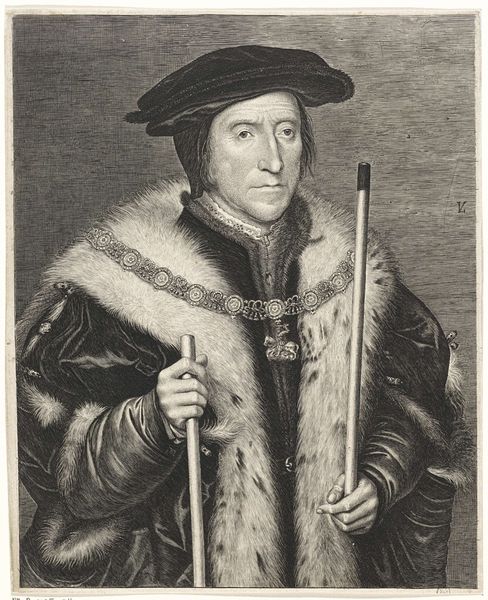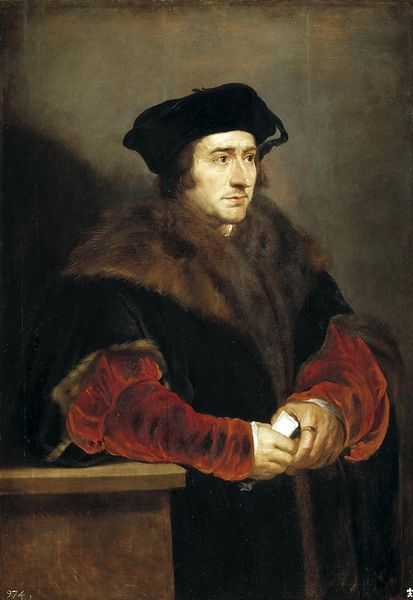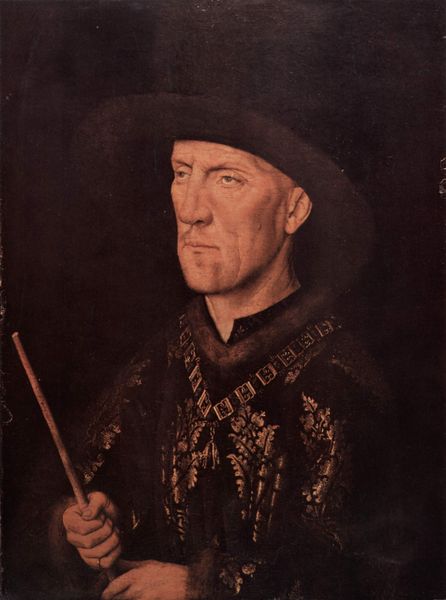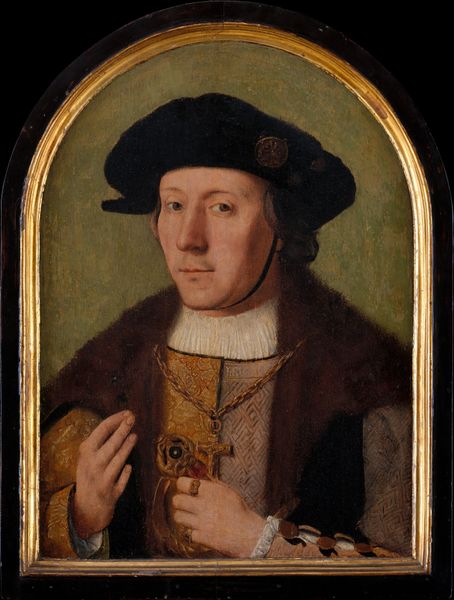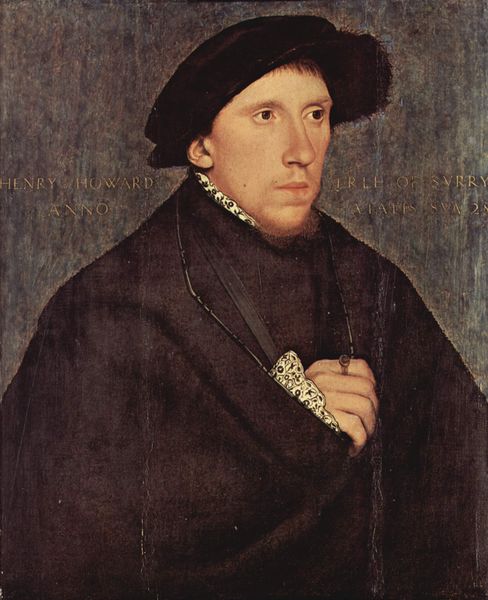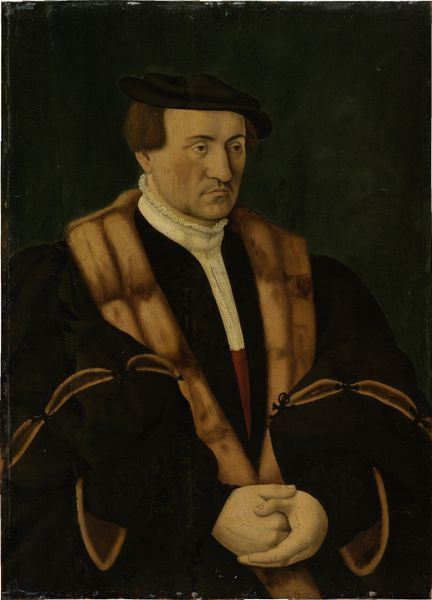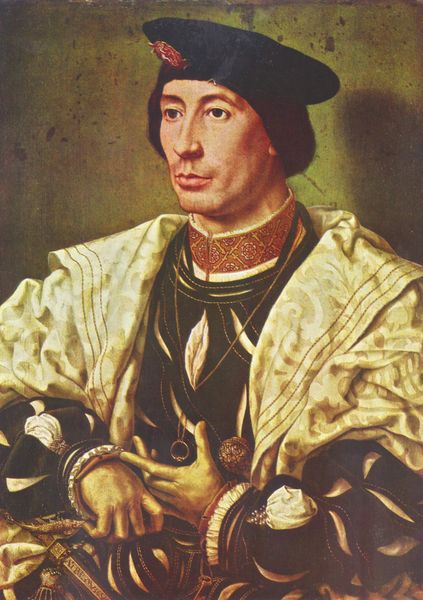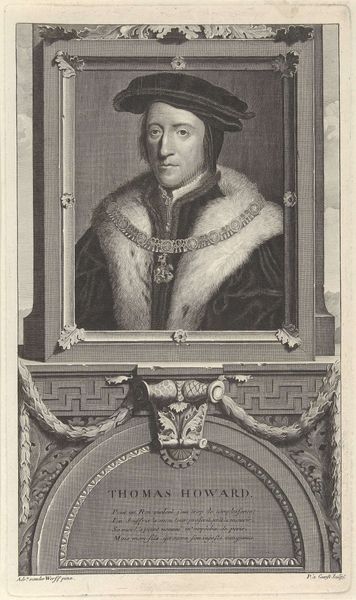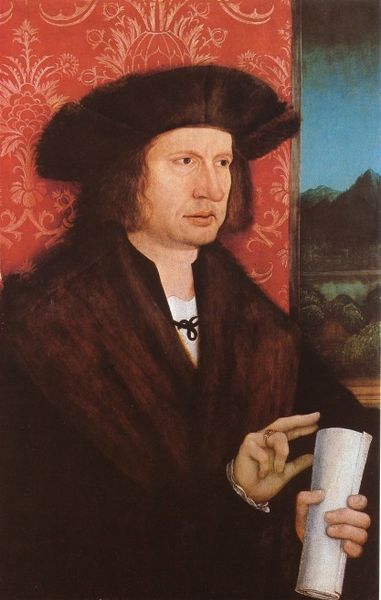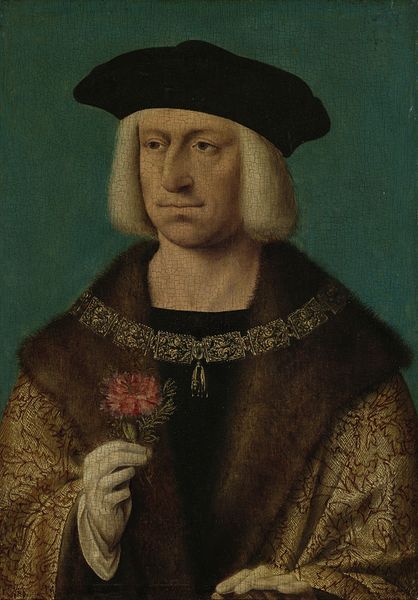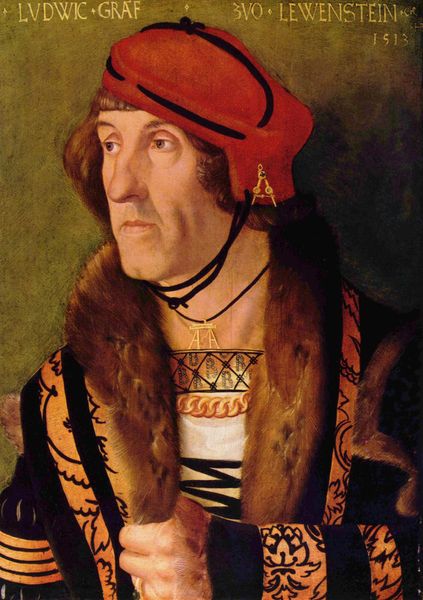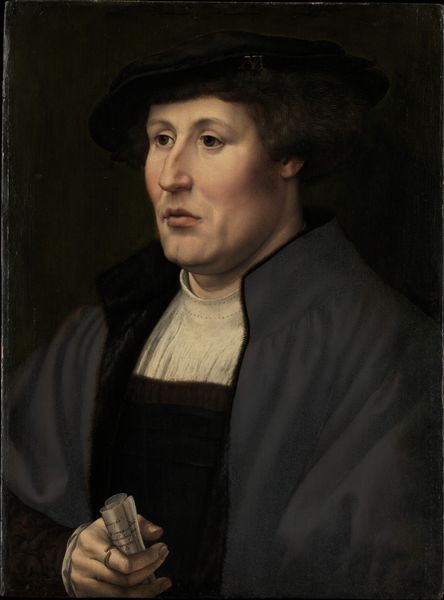
painting, oil-paint
#
portrait
#
painting
#
oil-paint
#
oil painting
#
history-painting
#
northern-renaissance
Dimensions: 61.8 x 80.3 cm
Copyright: Public domain
Curator: Just look at that stare! I mean, I know portraits from this time were meant to project power, but Hans Holbein the Younger really captured something… else, in his 1539 portrait of Thomas Howard. It's a painting rendered in oil paint. Editor: Yeah, it’s...intense, right? Immediately, the almost unbearable weight of that fur trim screams “oppression made fashionable.” And his unwavering gaze makes me intensely aware of the power dynamics at play here. Curator: Absolutely! Holbein had a knack for depicting the weight of responsibility, or perhaps the burden of guilt. Here's a man swimming in privilege and, dare I say, possibly discomfort? I sense he almost feels a fraud, masquerading within these material markers. Editor: That tension between presentation and reality feels really crucial. This was painted during a tumultuous time. Thomas Howard was a key figure in Henry VIII's court—a man who navigated the complexities of power and loyalty in a brutally patriarchal and religiously obsessed environment. How did those elements impact this particular representation? Curator: Well, he presents with the expected markers of authority—that lavish fur-lined coat, that weighty chain, the walking stick, symbolic of both status and authority. These pieces feel intentionally rendered to remind us of his position. But I see the slightest downturn of his lips that hints to an underlying conflict. Maybe even an awareness of how fleeting this authority is, given Henry VIII’s, shall we say, track record. It seems that in an interesting power play Holbein has depicted Howard with as much vulnerability as pride. Editor: It definitely feels as though the painting subtly resists pure glorification. There’s a critical edge that reminds us that these symbols of wealth were built on intense social stratification, ruthless consolidation of wealth and resources and bloody power struggles. It’s all beautiful… and terrifying. Curator: Precisely. It's Holbein's gift – the ability to reveal the psychological layers beneath the surface of pomp and circumstance. He captures both the man and the meticulously constructed façade. Editor: Ultimately, the painting functions as more than just a portrait. It serves as an unsettling artifact that asks probing questions about identity, the burden of legacy, and the social narratives that define us. Curator: It is certainly food for thought when considering inherited social power! A glimpse of a particular moment in history viewed through the window of an unnerving portrayal.
Comments
No comments
Be the first to comment and join the conversation on the ultimate creative platform.
